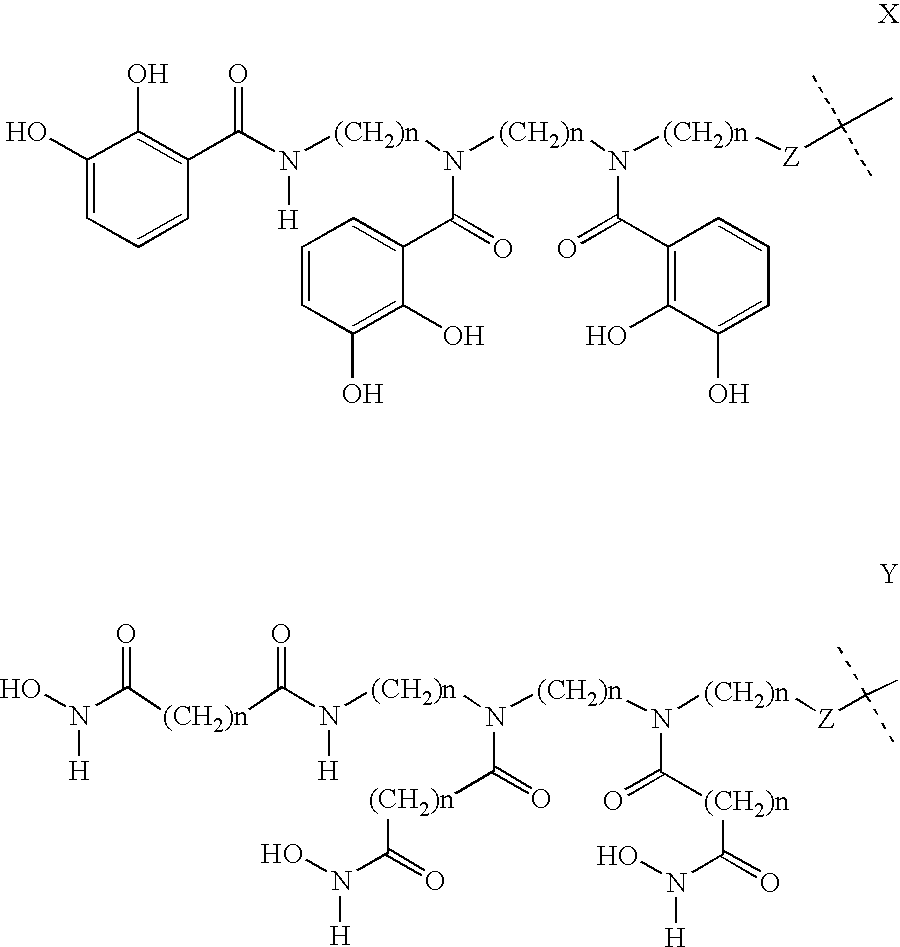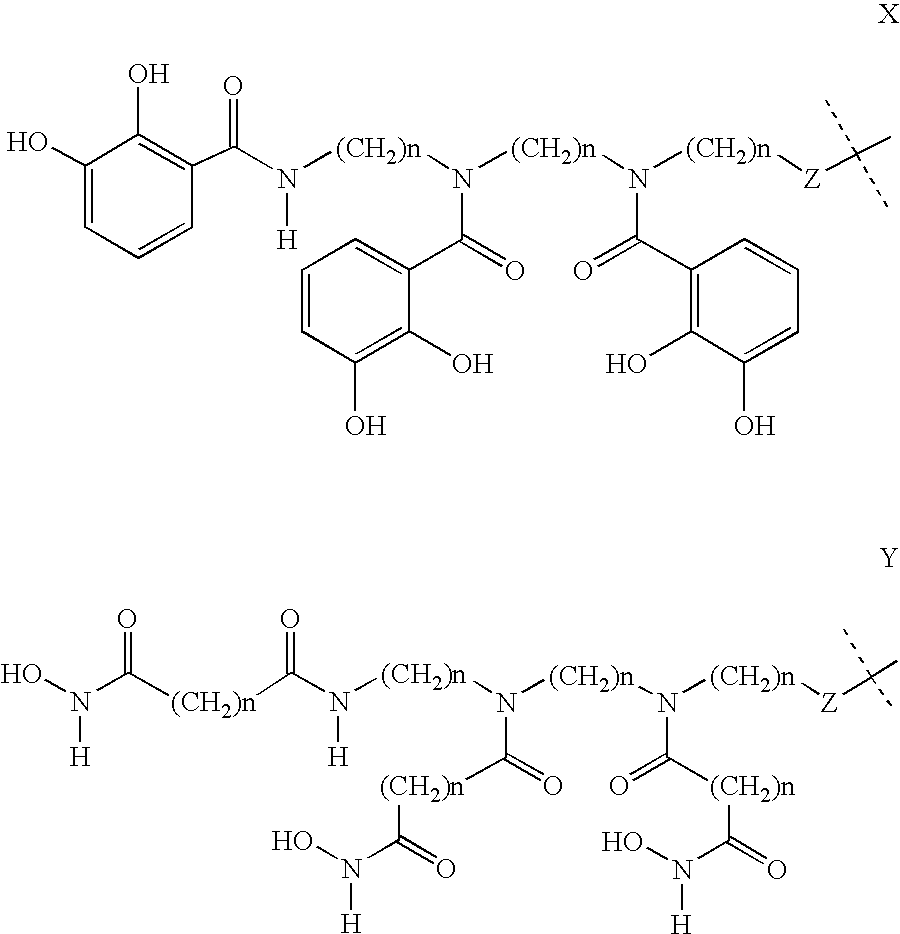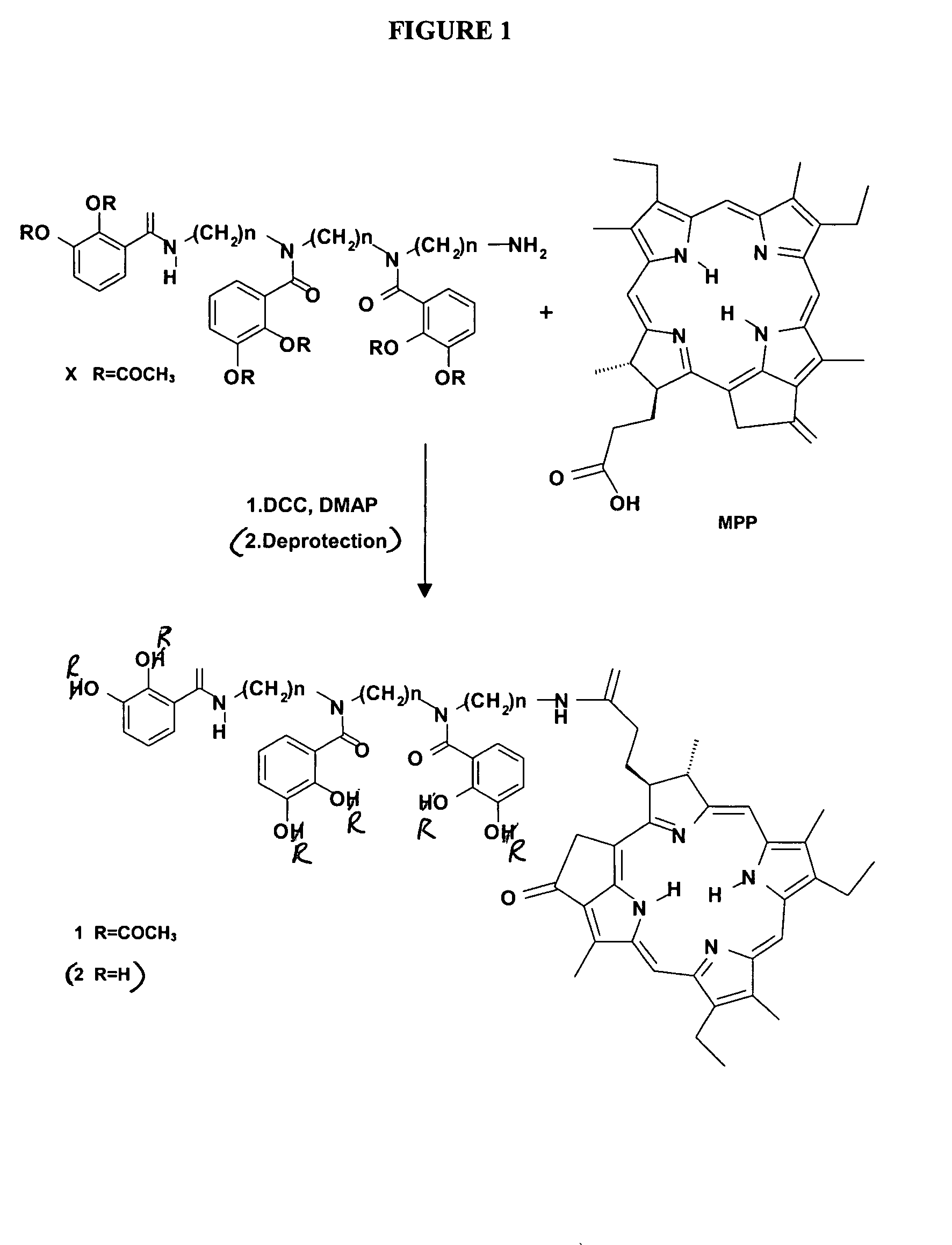Siderophore conjugates of photoactive dyes for photodynamic therapy
a technology of photodynamic therapy and siderophore, which is applied in the direction of antibacterial agents, peptide/protein ingredients, drug compositions, etc., can solve the problems of limited use of pdt for the treatment of various types of diseases, lack of specificity, and patient gaining a new set of maladies from the therapy, so as to improve the selectivity of pathogenic microorganisms, improve the effect of photodynamic antimicrobial therapy and improve the penetration of bacteria
- Summary
- Abstract
- Description
- Claims
- Application Information
AI Technical Summary
Benefits of technology
Problems solved by technology
Method used
Image
Examples
example 2
[0042] Structures 3 and 4 as shown in FIG. 2 can be obtained by coupling the carboxylic group of catechol type siderophore X(R.dbd.COCH.sub.3) with meso-pyro-pheophorbide substituted by a diamine residue such as hexamethylene diamine (HDA-MPP).
[0043] The procedure for coupling X with HDA-MPP and the subsequent purification by chromatography on Sephadex LH-20, is identical to the procedure described in example 1.
[0044] By that method, conjugate 3 was obtained in 80% yield. By the same procedure as described in example 1, conjugate 3 was converted to the deacetylated catechol 4 in 80% yield.
[0045] Physico-Chemical Properties of Conjugates 1, 2, 3 and 4:
[0046] Appearance:
[0047] bluish-violet, solid (1, 2, 3 and 4)
[0048] Solubility:
[0049] 1 and 3: alcohols (MeOH, EtOH,)CHCl.sub.3, DMSO
[0050] 2 and 4: alcohols (MeOH, EtOH, ProOH), DMSO
[0051] Molecular weight:
PUM
| Property | Measurement | Unit |
|---|---|---|
| temperature | aaaaa | aaaaa |
| solubility | aaaaa | aaaaa |
| antibiotic resistance | aaaaa | aaaaa |
Abstract
Description
Claims
Application Information
 Login to View More
Login to View More - R&D
- Intellectual Property
- Life Sciences
- Materials
- Tech Scout
- Unparalleled Data Quality
- Higher Quality Content
- 60% Fewer Hallucinations
Browse by: Latest US Patents, China's latest patents, Technical Efficacy Thesaurus, Application Domain, Technology Topic, Popular Technical Reports.
© 2025 PatSnap. All rights reserved.Legal|Privacy policy|Modern Slavery Act Transparency Statement|Sitemap|About US| Contact US: help@patsnap.com



